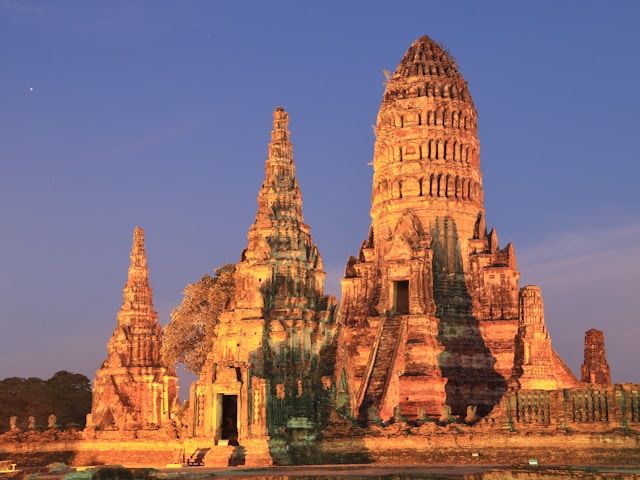
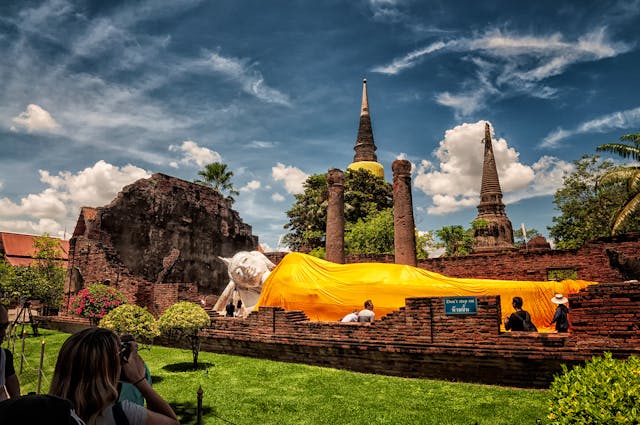
The Rise of Ayutthaya
Ayutthaya Kingdom or the Empire of Ayutthaya, a powerful and prosperous Siamese kingdom located in modern-day Thailand from 1351 to 1767. It dominated Southeast Asia in many fields like culture, trade, and military power. King Ramathibodi I founded Ayutthaya in 1351 and quickly became one of the superpowers in Asia.
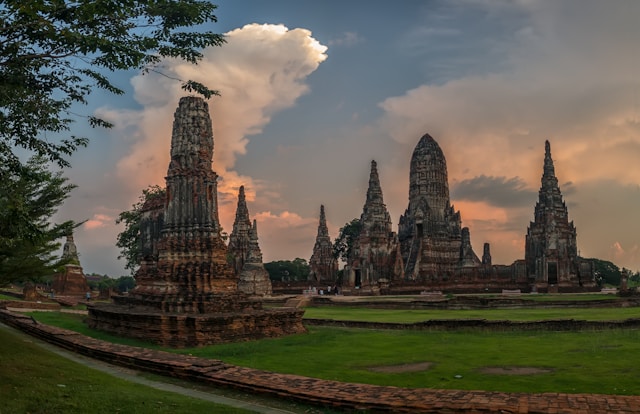
With its strategic location near the rivers of Chao Phraya, the Lopburi, and the Pa Sak, the kingdom allowed itself to control trading routes between China, India, and the Malay Peninsula. During its peak, the kingdom became one of the superpowers in Asia.
Many European traders and diplomats were amazed at the vastness and grandeur of the capital city. Some travelers also compared this city to other European cities like Paris and Venice. The ancient city of Ayutthaya described by many visitors as a city filled with wealth, gold palaces, giant fortresses, and elegant teak houses (Harrington, 2004). With strong diplomatic ties, formidable military, and economic power, Ayutthaya successfully kept off their neighboring rivals from attacking their kingdom for the next centuries.
The Burmese Invasion of Siam
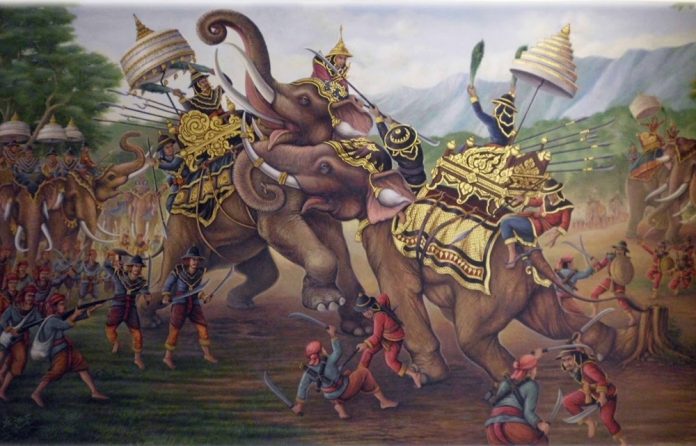
Peace did not last long throughout the kingdom of Ayutthaya. The rivalry between the Burmese and Siamese Kingdoms existed for hundreds of years. Both powers competed for territories, trade routes, and regional influence throughout the Southeast Asia region.
Several wars between Siam and Burma occurred since the 16th century with inconclusive results. In 1569, King Bayinnaung of Burma successfully conquered Ayutthaya and made the kingdom Burma’s vassal state. However, the famous Siam king called Naresuan the Great led Siam to gain its independence back after the battle of Nong Sarai.
170 years after gaining its independence back, King Hsinbyushin ascended the Burmese throne in 1763. The new king was ambitious and aggressive, and he intended to expand Burma’s territory. After successful military campaigns in Manipur and China, King Hsinbyushin turned his attention to the kingdom of Siam.
In 1765, King Hsinbyushin divided his army into 2 routes, the Northern and Southern routes. These 2 divisions launched a massive and coordinated attack on Ayutthaya. The Northern division successfully conquered Chiang Mai and other Northern Siamese regions. On the other hand, the Southern division advanced from the South and conquered territories along the Malay Peninsula and Gulf of Thailand.
The Final Siege on 1767

The 2 divisions of the Burmese army finally met and converged in the city of Ayutthaya. Finally, The Burmese started the final siege and last offensive in 1766. The Burmese cut off the Siamese supplies route and isolate the capital city from the rural areas. On the contrary, the Siamese armies used traditional defensive strategy by relying only to its fortresses and walls.
The strategy implemented by the Burmese proven to be successful. Ayutthaya’s population endured severe food shortages and famine. With low supplies of food and morale, the city’s defenses depleted massively. During the siege, The Burmese constructed three forts surrounding Ayutthaya with the height about 4.5 meters. The 3 forts used by the Burmese to supervise and guard the tunnel digging to penetrate into the city of Ayutthaya.
To counter this fort, the Siamese army took an initiative to take out these newly-built forts from the Burmese. King Ekkathat sent ten thousand men to attach the Burmese forts in packed lines. The Siamese forces used their portable ladders to climb out the Burmese forts and successfully enter the forts. Despite their early success and nearly capitulate the forts, the Burmese reinforcements arrived in time and counter this major Siamese attack. Later these attackers retreated back into the Ayutthaya Citadel to rally themselves.
Finally in 7th April 1767, the Burmese armies breached the Ayutthaya’s defenses. The Siamese defenders were not able to fend of the disciplined Burmese army. The Burmese used the newly constructed tunnel to set fire on the Ayutthaya’s wall. At 8 pm, the Northeasters section of the wall collapsed and the Burmese breached into the Ayutthayan citadel. The remaining forces of 10,000 Siamese defenders made their last stand in the citadel, but the attempts were in vain.
Aftermath of the Battle and the Fall of Ayutthaya Kingdom

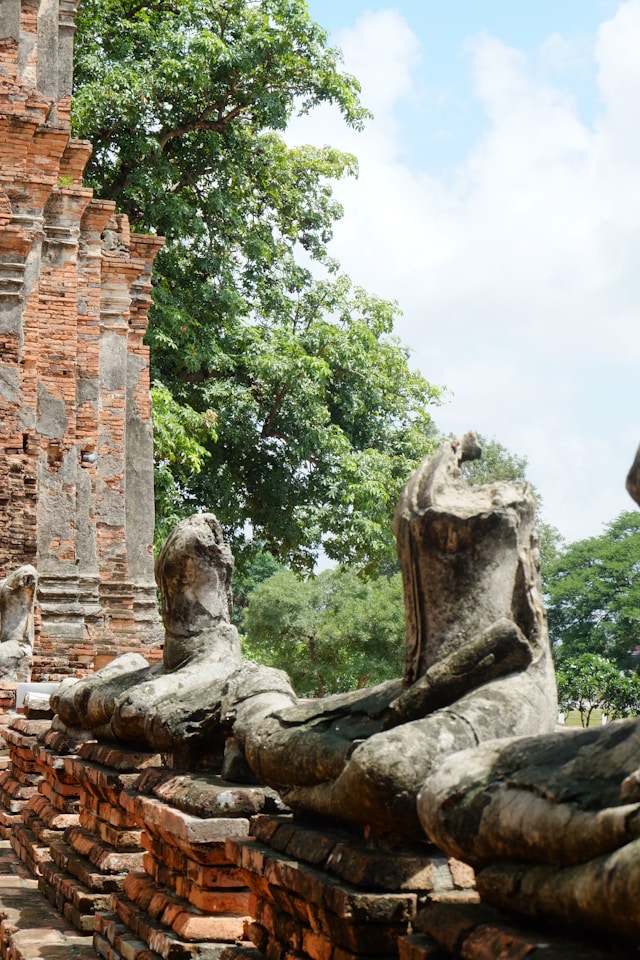
The Burmese implemented scorched earth tactics in the Ayutthaya city. The attackers slaughtered Ayutthaya citizens that they encountered in their path. The city previously known as a prosperous, vibrant, and wealthy filled with palaces, temples, and treasures was completely obliterated by the Burmese.
The Burmese armies burned down many buildings including royal palaces and many temples. In addition, the Burmese looted many of Ayutthaya’s treasures and brought them back to Myanmar. The scale of the destruction was immense, and their capital city was wiped off the map.
According to some witnesses, King Ekkathat of Ayutthaya tried to flee from his palace to the western gate. However, a random gunshot from the Burmese killed him during his try to flee the city. Furthermore, the Burmese captured many Siamese royal members and nobility including important ministers. A total of 2,000 Siamese elites were captured and deported from the fallen city. Much Siamese wealth such as gems, gold, Buddhist scriptures, and academic works were also taken by the conquerors.
The city of Ayutthaya’s Legacy and Influence on Modern-day Thailand
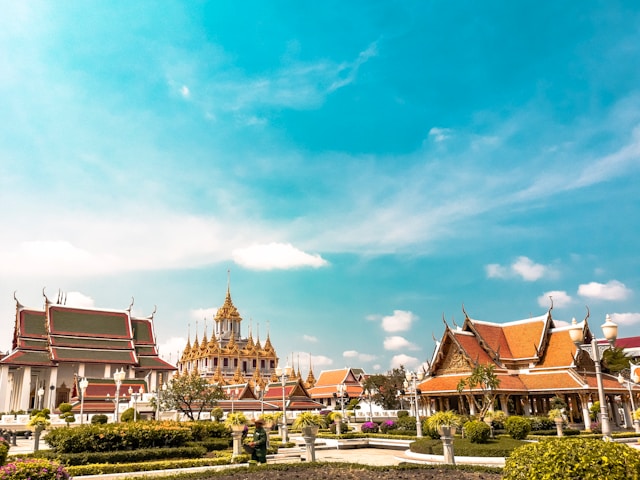


Despite the massive destruction of the city, the legacy of Ayutthaya survived. The city’s fall was a turning point in Thailand’s history. The Ayutthaya kingdom also laid the foundation of modern Thailand. Additionally, the destruction of the city shows the resilience of the Thai people, who were able to recover from the destruction.
The kingdom of Ayutthaya had a significant important and lasting influence on modern-day Thailand, shaping its culture, politics, religion, and identity. Ayutthaya established a tradition of monarchy that continues up to this day. The belief in the king’s divinity and untouchability continues to influence modern-day Thailand.
Regarding religion and culture, Ayutthaya widely celebrated and practiced Theravada Buddhism and became the center of Buddhist learning. Buddhism remains the main religion of modern-day Thailand, shaping the country’s identity and culture. Furthermore, many of Thailand’s literary works, royal traditions, arts, and cuisines also originated back to the Ayutthaya period.
The last significant factor is evident in Thailand’s national identity. After Ayutthaya’s conquest by the Burmese, King Rama I founded the Chakri dynasty and chose Bangkok as the new capital. He successfully integrated Ayutthaya’s political and cultural values into Bangkok, ensuring the preservation of Thailand’s national identity.
References
https://www.renown-travel.com/historicalsites/ayutthaya/history.html
https://themaritimeexplorer.ca/2023/06/28/ayutthaya-thailands-forgotten-capital/
Harrington, Jane Therese (2004) ‘Being here’: heritage, belonging and place making: a study of community and identity formation at Avebury (England), Magnetic Island (Australia) and Ayutthaya (Thailand). PhD thesis, James Cook University.
